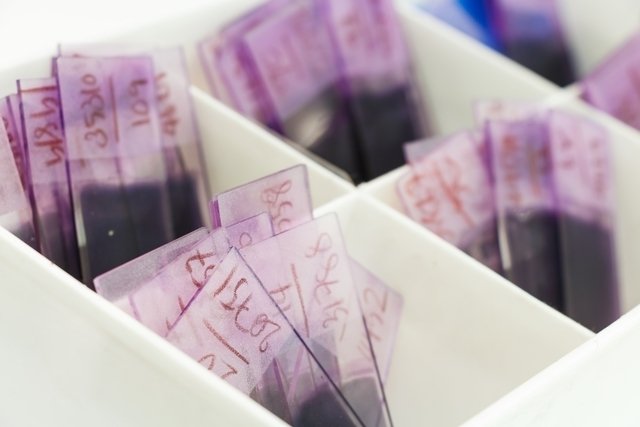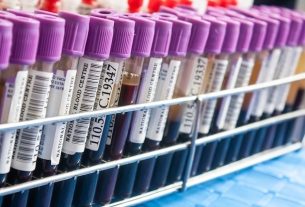Platelets are small fragments of a cell produced by the bone marrow, the megakaryocyte, and act mainly in the blood clotting process, being essential to prevent major bleeding.
The process of megakaryocyte production by the bone marrow and fragmentation into platelets lasts about 10 days and is regulated by the hormone thrombopoietin, which is produced by the liver and kidneys.
The amount of circulating platelets can be identified through a blood count, in which all blood components are evaluated, including platelets, being useful for diagnosing thrombocytosis, which is when there is an excess of circulating platelets, and thrombocytopenia, which is when there are fewer platelets, which increases the risk of bleeding. Find out more about thrombocytopenia.

Functions of platelets
The main function of the platelet is to form the platelet plug, which aims to stop bleeding. In the absence of platelets, several spontaneous blood leaks can occur in small vessels, which can compromise the person’s health status. See how platelets work to stop bleeding.
Reference values
The reference value for platelets is between 150,000 and 450,000/mm³ of blood. Values above or below the reference value may be indicative of diseases, and it is important to investigate the reason for the change in more detail.
It is important that the result is evaluated by the doctor, who must take into account the other results of the blood count and the results of other tests that may have been requested.
Enter your test result into the calculator below to find out if the result is normal:
Platelet changes
According to the circulating quantity of platelets, an increase, called thrombocytosis or thrombocytosis, or a decrease, called thrombocytopenia or thrombocytopenia, can be identified.
1. High platelets
The increase in the number of platelets, also known as thrombocytosis, is normally related to changes in the bone marrow, myeloproliferative diseases, hemolytic anemia and after surgical procedures, for example, as there is an attempt by the body to avoid major bleeding. Learn about other causes of increased platelets.
Do you have questions about your exam results?
A decrease in the number of circulating platelets, also known as thrombocytopenia or thrombocytopenia, can be a consequence of autoimmune diseases, infectious diseases, nutritional deficiency of iron, folic acid or vitamin B12 and problems related to spleen problems, for example. This decrease can be noticed by some symptoms, such as nose and gum bleeding, increased menstrual flow, purple spots on the skin and blood in the urine, for example. See more about low platelets.
When is platelet donation indicated?
Platelet donations can be made by anyone who weighs more than 50 kg and is in good health and aims to assist in the recovery of people undergoing treatment for leukemia or other types of cancer, people undergoing bone marrow transplants and heart surgeries, for example.
Platelet donation can be done without any harm to the donor, as platelet replacement by the body lasts around 48 hours, and is done by collecting the donor’s whole blood, which is then processed in the laboratory so that there is platelet separation.
Platelet donation is only permitted for women who have never been pregnant and for people who have not used aspirin, acetylsalicylic acid or non-steroidal anti-inflammatory drugs in the 3 days before donation.
Read too: How to increase platelets (foods, medicines and more)
We regularly update our content with the latest scientific information, so that it maintains an exceptional level of quality.
Bibliography
- JINNA, S.; KHANDHAR, P. B. IN: STATPEARLS (INTERNET). TREASURE ISLAND (FL): STATPEARLS PUBLISHING. Thrombocytopenia. 2023. Available at: <https://www.ncbi.nlm.nih.gov/books/NBK542208/>. Accessed on January 16, 2024
- NATIONAL HEART, LUNG AND BLOOD INSTITUTE. Platelet Disorders: Thrombocythemia and Thrombocytosis. Disponível em: <https://www.nhlbi.nih.gov/health/thrombocythemia-thrombocytosis#What-are-the-symptoms?>. Acesso em 14 dez 2023
- Kabat, GC et al. Platelet count and total and cause-specific mortality in the Women’s Health Initiative. Annals of epidemiology. Vol. 27, n.4. 274-280, 2017
- LIFELABS CLINICAL LABORATORY. Burnaby Reference Laboratory. 2023. Available at: <https://lifelabs.azureedge.net/lifelabs-wp-cdn/2018/10/brl_ranges.pdf>. Accessed on 14 Dec 2023

Sign up for our newsletter and stay up to date with exclusive news
that can transform your routine!
Warning: Undefined array key "title" in /home/storelat/public_html/wp-content/plugins/link-whisper-premium/templates/frontend/related-posts.php on line 12
Warning: Undefined array key "title_tag" in /home/storelat/public_html/wp-content/plugins/link-whisper-premium/templates/frontend/related-posts.php on line 13



